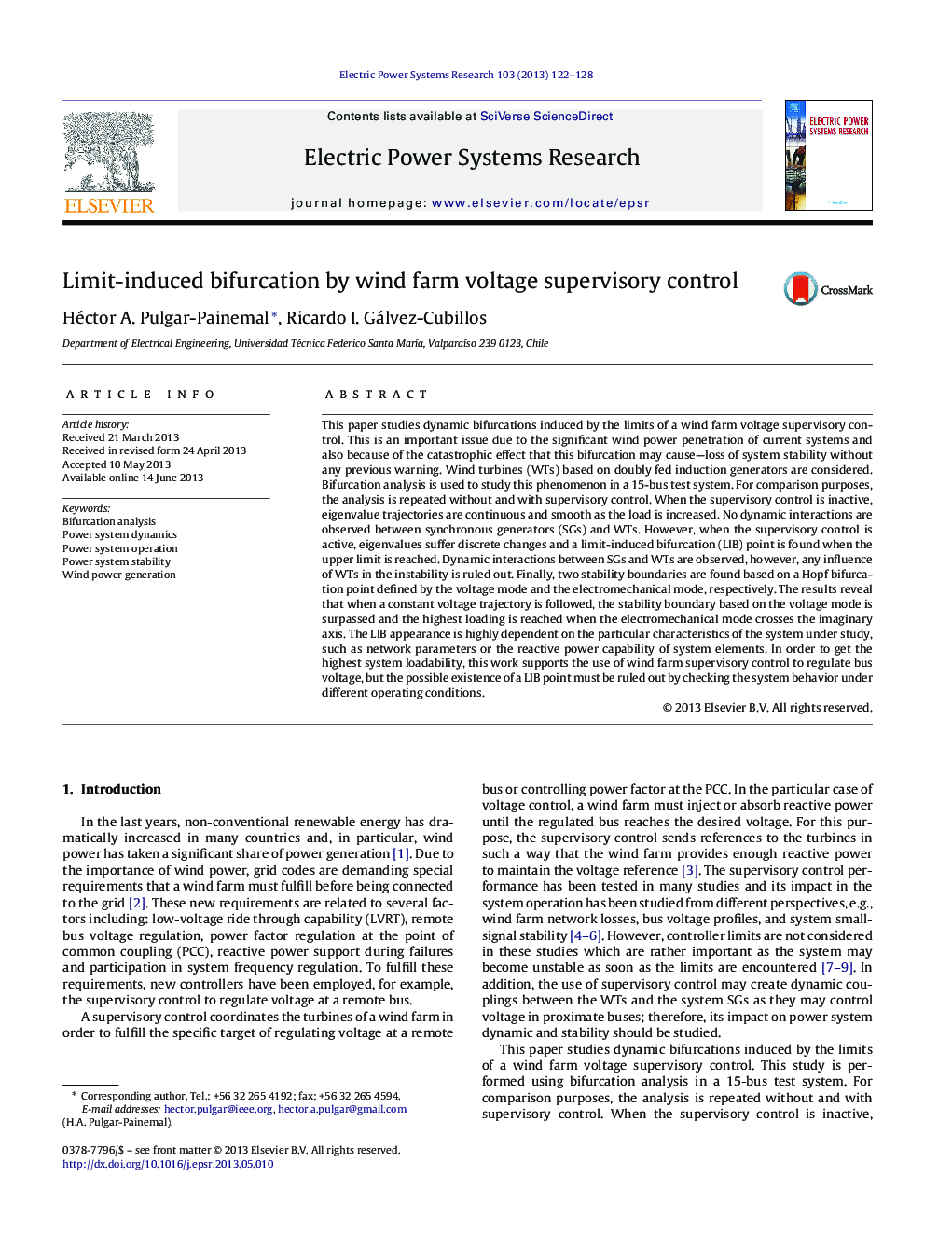| Article ID | Journal | Published Year | Pages | File Type |
|---|---|---|---|---|
| 703833 | Electric Power Systems Research | 2013 | 7 Pages |
•Bifurcation analysis of a power system with wind power generation is performed.•Wind turbines have a supervisory control (SC) to regulate a remote bus voltage.•A bifurcation induced by the supervisory control limits is found.•2 stability boundaries found, related to both the voltage and electromechanical mode.•When SC is used, rule out LIB by checking different system operating conditions.
This paper studies dynamic bifurcations induced by the limits of a wind farm voltage supervisory control. This is an important issue due to the significant wind power penetration of current systems and also because of the catastrophic effect that this bifurcation may cause—loss of system stability without any previous warning. Wind turbines (WTs) based on doubly fed induction generators are considered. Bifurcation analysis is used to study this phenomenon in a 15-bus test system. For comparison purposes, the analysis is repeated without and with supervisory control. When the supervisory control is inactive, eigenvalue trajectories are continuous and smooth as the load is increased. No dynamic interactions are observed between synchronous generators (SGs) and WTs. However, when the supervisory control is active, eigenvalues suffer discrete changes and a limit-induced bifurcation (LIB) point is found when the upper limit is reached. Dynamic interactions between SGs and WTs are observed, however, any influence of WTs in the instability is ruled out. Finally, two stability boundaries are found based on a Hopf bifurcation point defined by the voltage mode and the electromechanical mode, respectively. The results reveal that when a constant voltage trajectory is followed, the stability boundary based on the voltage mode is surpassed and the highest loading is reached when the electromechanical mode crosses the imaginary axis. The LIB appearance is highly dependent on the particular characteristics of the system under study, such as network parameters or the reactive power capability of system elements. In order to get the highest system loadability, this work supports the use of wind farm supervisory control to regulate bus voltage, but the possible existence of a LIB point must be ruled out by checking the system behavior under different operating conditions.
